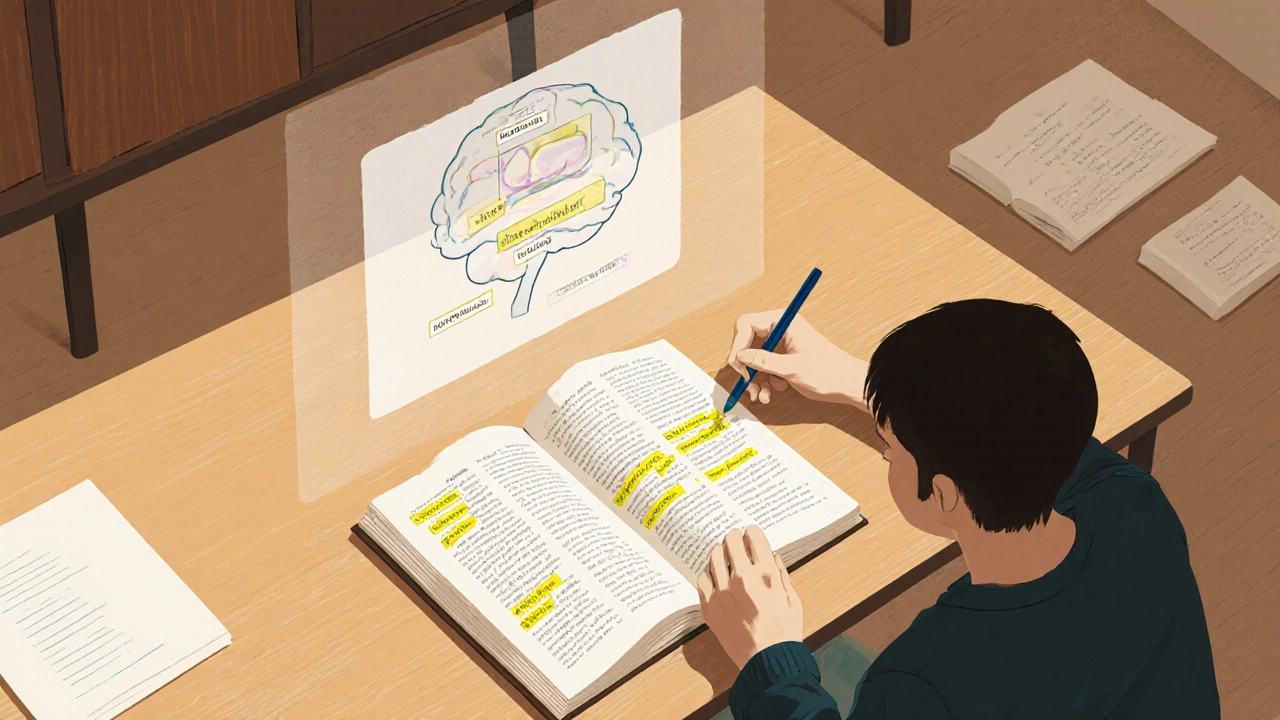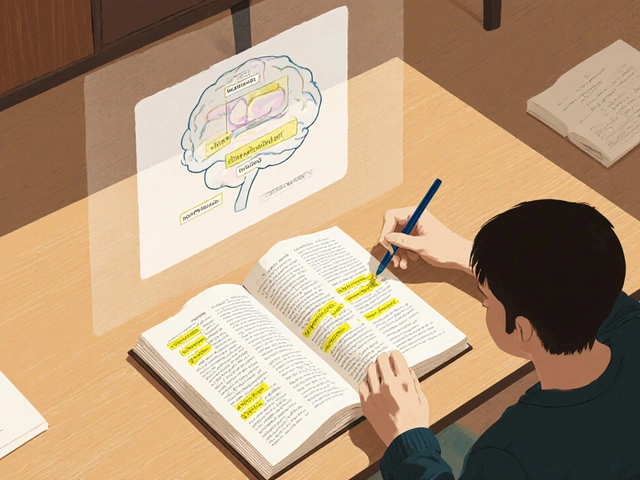3R Study Time Calculator
Enter your total study time and we'll calculate the optimal time distribution for the three R's of memorization (Read, Recite, Review). The recommendations follow cognitive science principles for maximum retention.
Read Phase
0 minutes
Focus on building mental scaffolds, chunking text, and strategic highlighting
Recite Phase
0 minutes
Test your memory with cover-and-say, teach-back, or audio recording
Review Phase
0 minutes
Strengthen retention with spaced repetition and active testing
When you need to lock information into your brain for exams, presentations, or daily life, the three R's of memorization offer a simple, research‑backed roadmap. By breaking study sessions into three focused actions-Read, Recite, and Review-you turn passive reading into active learning, boost long‑term retention, and cut down wasted time.
Three R's of memorization is a memory framework that guides learners through a cycle of reading material, verbally recalling it, and revisiting it later to solidify retention. It draws on cognitive‑psychology principles like active recall and spaced repetition.
Why the three R's matter
Most students skim textbooks, underline a few lines, then hope the information sticks. Science tells us that Active Recall the practice of retrieving information from memory without prompts is far more effective than re‑reading. The three R's embed active recall (Recite) and spaced reinforcement (Review) into a single, repeatable loop, making it easier to adopt consistently.
Step1: Read - Build the foundation
The first R isn’t just skimming. It’s a focused, intentional read that creates a mental scaffold. Here’s how to do it:
- Set a purpose: ask yourself, “What do I need to know after this page?”
- Chunk the text: break paragraphs into 3‑5 sentence groups.
- Highlight strategically: use a single colour for key terms, not whole sentences.
During this phase you’re engaging Working Memory the short‑term storage system that holds information while you process it. Keeping chunks short prevents overload and sets up smoother retrieval later.
Step2: Recite - Turn passive input into active output
Now that the material is fresh, close the book and speak the core ideas out loud, or write them from memory. Reciting forces your brain to pull the information from Long‑Term Memory the durable storage where knowledge resides after consolidation, strengthening neural pathways.
Effective recitation tips:
- Use the “cover‑and‑say” method: cover the page, then summarize each chunk in your own words.
- Teach an imaginary student or a study partner-explaining concepts solidifies understanding.
- Record yourself and replay the audio; hearing the information twice boosts retention.
Research shows that each successful recall can improve memory by up to 30% compared with simple re‑reading.

Step3: Review - Reinforce before forgetting kicks in
Memory fades over time, following the well‑known forgetting curve. To combat this, schedule reviews at increasing intervals-a technique known as Spaced Repetition reviewing material at strategically spaced intervals to cement it into long‑term memory. The three R's recommend a quick review 10‑15 minutes after Recite, then again after 1 day, 3 days, and a week.
During each review, focus on:
- Spotting gaps: if you can’t recall a point, revisit the original text briefly.
- Mixing contexts: shuffle topics so the brain can retrieve information in varied settings.
- Testing yourself: use flashcards or practice quizzes rather than re‑reading.
Putting the three R's into a daily study routine
Here’s a sample 45‑minute session for a university biology chapter:
- Read (15min): skim headings, then read two paragraphs at a time, highlighting key terms.
- Recite (10min): close the book, write a one‑sentence summary for each paragraph, then speak it aloud.
- Review (5min): glance at your notes, fill any blanks, and set a reminder for a 1‑day review.
- Repeat the cycle for the next section, or switch subjects to keep mental fatigue low.
By the end of the week, you’ll have a concise set of notes that you’ve already rehearsed multiple times-perfect for any exam.
Common pitfalls and how to avoid them
Even a solid framework can go off‑track if you fall into these traps:
- Relying on highlighting alone: It feels productive but doesn’t trigger recall. Pair highlighting with Recite.
- Skipping the Review: Without spaced reinforcement, the brain reverts to the forgetting curve.
- Rushing Recite: Shallow paraphrasing isn’t enough. Aim for the “teach‑back” depth.
- Studying in the same environment every time: Vary locations to improve contextual flexibility.
Address each issue by adding a tiny habit-like a 2‑minute chunk of flash‑card review after every Recite session.
Beyond the three R's: complementary techniques
The three R's form a core loop, but you can layer other proven strategies:
- Mnemonics: Link abstract facts to vivid images or acronyms.
- Interleaving: Mix different subjects in one study block to improve discrimination.
- Dual coding: Pair text with diagrams or sketches; the brain stores visual and verbal cues.
When combined, these methods amplify the retention gains already unlocked by Read‑Recite‑Review.
Quick reference table
| Step | Primary Goal | Best‑Practice Tips |
|---|---|---|
| Read | Build initial mental scaffold | Set purpose, chunk text, highlight sparingly |
| Recite | Force active recall | Cover‑and‑say, teach aloud, record & replay |
| Review | Strengthen long‑term storage | Spaced intervals, test yourself, mix contexts |
Frequently Asked Questions
What makes the three R's different from simple re‑reading?
Re‑reading is a passive activity that leaves information in Working Memory only briefly. The three R's insert active recall (Recite) and spaced reinforcement (Review), which move knowledge into Long‑Term Memory and dramatically increase retention.
How long should each R stage take?
There’s no one‑size‑fits‑all, but a common split is 30% of study time for Read, 30% for Recite, and 10‑15% for immediate Review. Adjust based on material difficulty and personal speed.
Can the three R's be used for skills like programming?
Absolutely. Read the documentation, Recite by writing code from memory or explaining concepts aloud, then Review by revisiting the code after a day or two. The cycle works for procedural knowledge too.
Is it necessary to use flashcards for Review?
Flashcards are a handy tool because they force recall, but any low‑stakes test-quizzes, self‑generated questions, or teaching a peer-fulfills the Review purpose.
How often should I repeat the whole three‑R cycle for a single topic?
Start with an initial cycle, then schedule spaced repeats: 10‑15minutes later, 1day, 3days, 1week, and finally a month before the exam. Adjust if you notice gaps during each Review.










Write a comment